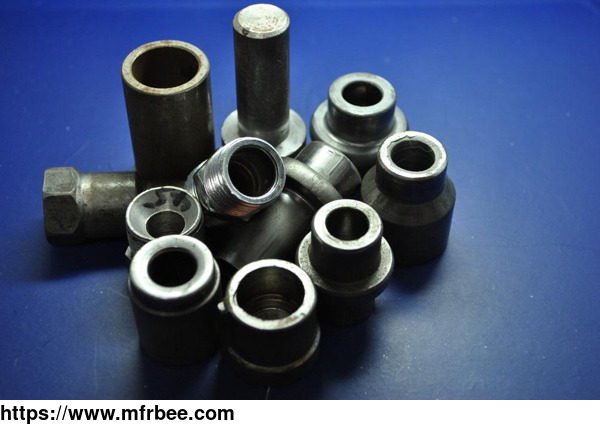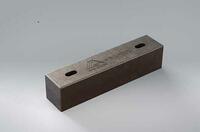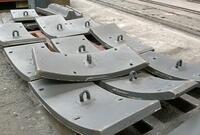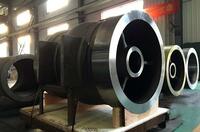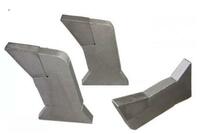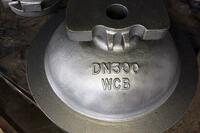Cold Forging
Quick Detail
- Minimum order:1
Specifications
Cold forging definition and cold forging meaning: Cold forging provided by WALKSON cold forging factories is a kind of forming processing for materials below recrystallization temperature, it is
forged below recovery temperature. Forging without heating blank is called cold forging.
Most of the cold forging materials are aluminum and some alloys, copper and some alloys, low carbon steel, medium carbon steel and low alloy structural steel with low deformation resistance and
good plasticity at room temperature. As one of the reputable cold forging products suppliers in China, we provide cold forging with good surface quality and high dimensional accuracy, which can
replace some cutting processing.
Cold forging by WALKSON, a professional cold and hot die forging manufacturer, can strengthen the metal and improve the strength of parts. For more information, please refer to our cold forging
process flow chart or cold forging diagram. Related process videos, pdf or ppt files are also available.
Advantages Of Cold Forging
Cold forging is an environmentally friendly manufacturing process in which the workpiece can be formed at high pressure and low temperature. This cold forging process is able to ensure there are no
bubbles, pores or any other impurities in the material, resulting in a very high quality cold forging product.
Compared with other manufacturing methods, the main advantages of cold forging are small dimensional tolerances, good surface finish, and low cost materials that can be worked to obtain the
required strength and hardened without heat treatment.
Application Of Cold Forging
Cold forging is one of the most widely used chip free molding processes and usually does not require machining beyond drilling. The generally accepted cold forging definition is bulk material
formed or forged at room temperature without heating the initial slug or intermediate stage.
Cold forging is growing a high popularity in the automotive industry for the manufacture of steering and suspension components, anti-lock braking systems, axles, drill bits, clutch hubs, gears,
pinions, pins, steps, and intermediate shafts and sleeves.
Cold Forging Vs Hot Forging
Cold forging process is a molding process carried out at room temperature,which is cold forging temperature. The advantage of cold forging is that we get a good surface finish for the cold forging
product.
While during the hot forging process, heat is applied to soften the sheet metal.
The main difference between hot forging and cold forging is that the high temperature of hot forging gives the metal a finer and more complex shape than cold forging.
Cold Forging Materials
Cold forging is the process of plastically deforming a metal material at room temperature while applying massive pressure.
Other key advantages of the cold forming process, in addition to improved overall material properties, include higher dimensional accuracy than forged parts, excellent surface quality, and no need
to apply additional energy into the process, such as extreme temperatures.
Cold forging materials that can be cold formed at Walkson include, but are not limited to:
Carbon steels, Alloy steels, Stainless steel, Copper, Aluminum, Bronze, Nickel alloys.
Advantages and Difficulties of Cold Forging Materials
Advantages Difficulties
Near-net-shape forming Extensive treatment of the work piece
Superior dimensional accuracy when compared to forged parts Forming degree is lower than with hot forming.
Material utilization is extremely high Complex forms difficult to realize
No scaling Higher tool expenditure
High surface quality
Work piece strength is increased through strain hardening.
Expedient grain flow as with hot forming
No heating necessary
Characteristics of Types of Cold Forging Materials 1
Sr. Grade C % Si % Mn % S % Max P % Max Cr % B 7% Mo % Pb % Ni % Other
1.1 AISI 1006 0.06 Max 0.10 Max 0.25-0.40 0.05 0.04
1.2 AISI 1008 0.10 Max 0.10 Max 0.30-0.50 0.05 0.04
1.3 AISI 1010 0.08-0.13 0.10 Max 0.30-0.60 0.05 0.04
1.4 AISI 1015 0.13-0.18 0.15 Max 0.30-0.60 0.05 0.04
1.5 AISI 1018 0.15-0.20 0.05-0.10 0.60-0.90 0.05 0.04
1.6 EN 1AL 0.08-0.15 0.10 Max 0.85-1.15 0.26-0.35 0.04-0.09 0.25-0.35
1.7 EN 1A 0.07-0.15 0.10 Max 0.80-1.20 0.20-0.30 0.060 Max
Characteristics of Types of Cold Forging Materials 2
Sr. Grade C % Si % Mn % S % Max P % Max Cr % B 7% Mo % Pb % Ni % Other
3.1 SCM 415H 0.12-0.18 0.15 -0.35 0.55 -0.90 0.03 0.03 0.85-1.25 0.15 -0.35 0.25 Max
3.2 SCM 435 0.32-0.39 0.15 -0.30 0.55 -0.90 0.03 0.03 0.80-1.25 0.15 -0.35 1.30-1.80
3.3 AISI 4135 0.33-0.38 0.15 -0.30 0.70 -0.90 0.04 0.035 0.80-1.10 0.15 -0.35 0.25 Max
3.4 EN 24 0.35-0.45 0.10 -0.35 0.45 -0.70 0.04 0.035 0.90-1.40 0.15 -0.35 1.30-1.80
3.5 AISI 4140 0.38-0.43 0.15 -0.30 0.75 -1.00 0.04 0.035 0.80-1.10 0.15 -0.25
3.6 AISI 4140M 0.38-0.43 0.15 -0.30 0.75 -0.90 0.005 0.015 0.80-1.10 0.15 -0.25
3.7 AISI 5140 0.38-0.43 0.15 -0.30 0.70 -0.90 0.04 0.035 0.70 -0.90
3.8 AISI 1541 0.36-0.44 0.15 -0.30 1.35-1.65 0.05 0.04
Characteristics of Types of Cold Forging Materials 3
Sr. Grade C % Si % Mn % S % Max P % Max Cr % B % Mo % Pb % Ni % Other
2.1 AISI 10821 M 0.18-0.23 0.30 Max 0.80-1.10 0.03 0.03 0.10-0.20 0.0005-0.003
2.2 AISI 15B25 0.23-0.28 0.30 Max 0.90-1.30 0.03 0.03 0.10-0.20 0.0005-0.003
2.3 DIN 19MnB4M 0.20-0.25 0.15 -0.30 0.80-1.10 0.03 0.03 0.30-0.40 0.0006-0.003
2.4 AISI 15B41 0.38-0.44 0.15 -0.30 1.35-1.65 0.03 0.03 0.10-0.20 0.0006-0.003
2.5 AISII 10936M 0.34-0.39 0.15 -0.30 0.80-1.10 0.03 0.03 0.20-0.40 0.0006-0.003
2.6 DIN 36CrB4 0.34-0.38 0.10 Max 0.60-0.90 0.015 0.015 0.90-1.20 0.0015-0.005
2.7 AISI 51B35M 0.34-0.40 0.15 -0.30 0.35-0.50 0.025 0.025 0.80-1.15 0.0006-0.003 0.10 Max 0.15 Max
As a steel foundry china, we will do our best to meet all the needs of customers.
We can also offer sorts of mining products for sale, if you have needs, please contact us.
